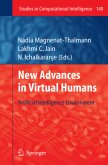Sound waves propagate through various media, and allow communication or entertainment for us, humans. Music we hear or create can be perceived in such aspects as rhythm, melody, harmony, timbre, or mood. All these elements of music can be of interest for users of music information retrieval systems. Since vast music repositories are available for everyone in everyday use (both in private collections, and in the Internet), it is desirable and becomes necessary to browse music collections by contents. Therefore, music information retrieval can be potentially of interest for every user of computers and the Internet. There is a lot of research performed in music information retrieval domain, and the outcomes, as well as trends in this research, are certainly worth popularizing. This idea motivated us to prepare the book on Advances in Music Information Retrieval.
It is divided into four sections: MIR Methods and Platforms, Harmony, Music Similarity, and Content Based Identification and Retrieval. Glossary of basic terms is given at the end of the book, to familiarize readers with vocabulary referring to music information retrieval.
Hinweis: Dieser Artikel kann nur an eine deutsche Lieferadresse ausgeliefert werden.
It is divided into four sections: MIR Methods and Platforms, Harmony, Music Similarity, and Content Based Identification and Retrieval. Glossary of basic terms is given at the end of the book, to familiarize readers with vocabulary referring to music information retrieval.
Hinweis: Dieser Artikel kann nur an eine deutsche Lieferadresse ausgeliefert werden.
From the reviews:
"Ras and Wieczorkowska have compiled a 17-paper book that gives readers a glimpse into some of the current research approaches ... . The 400-page book is structured into four parts. ... The book gathers the contributions of almost 50 authors. ... will provide readers who are interested in music information retrieval with a fair description of the state of the art of this economically important research domain." (P. Jouvelot, ACM Computing Reviews, December, 2010)
"Music is both a science and an art. All of its different dimensions, whether melody, rhythm, timbre, mood, harmony, or counterpoint, are of interest to users of music information retrieval (MIR) systems. ... This book's aim is to popularize the research trends in the area of MIR. ... I strongly recommend this gem of a book for scientific libraries." (Soubhik Chakraborty, ACM Computing Reviews, March, 2011)
"Ras and Wieczorkowska have compiled a 17-paper book that gives readers a glimpse into some of the current research approaches ... . The 400-page book is structured into four parts. ... The book gathers the contributions of almost 50 authors. ... will provide readers who are interested in music information retrieval with a fair description of the state of the art of this economically important research domain." (P. Jouvelot, ACM Computing Reviews, December, 2010)
"Music is both a science and an art. All of its different dimensions, whether melody, rhythm, timbre, mood, harmony, or counterpoint, are of interest to users of music information retrieval (MIR) systems. ... This book's aim is to popularize the research trends in the area of MIR. ... I strongly recommend this gem of a book for scientific libraries." (Soubhik Chakraborty, ACM Computing Reviews, March, 2011)








